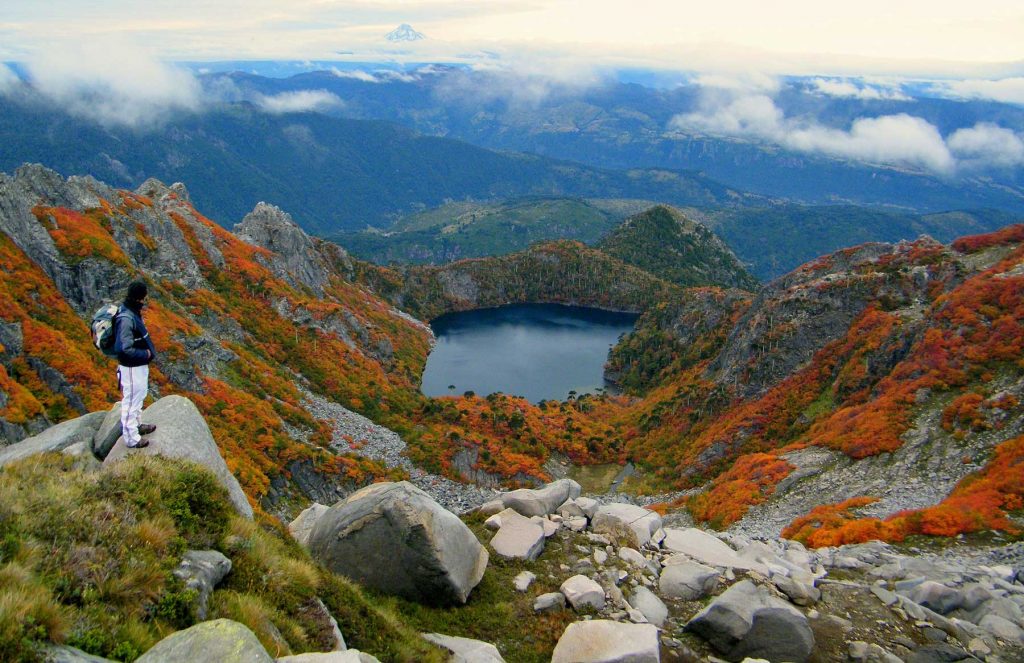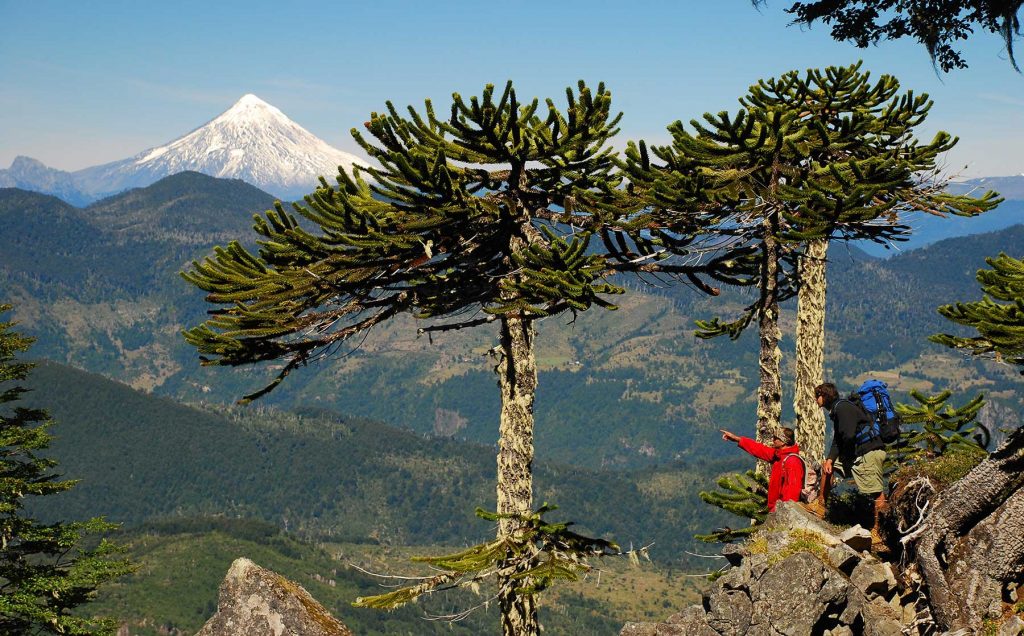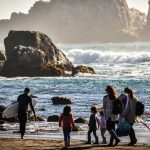One of our favorite places to use as a base camp in the Lakes Region of Chile is the outdoor activity town of Pucón. There is a rich and varied landscape, including volcanoes, birdlife and a very special tree that for millennia has sustained the Mapuche, the original inhabitants of this land. On a visit to Pucón, visitors can immerse themselves in the natural beauty of the landscape, as well as in the gastronomy of this ancestral culture.
Looking at the big picture, training our eyes east of Pucón towards the border with Argentina, there are three volcanoes that predominate the landscape. Volcán Villarrica (also called Rucapillán) clocks in at 2847 meters and is one of the most active in South America, and is a great, if strenuous day-hike with rewarding views over the valley below. Volcán Quetrupillán is nearby, topping out at 2360 meters. And finally, there is the imposing and Volcán Lanin, which lays on the Chile-Argentina border and is 3847 meters tall. Lanín is often referred to as the “Aconcagua” of this area, owing to the fact, that just like Aconcagua (the tallest mountain in South America), Lanín stands a full head above the surrounding volcanoes, at more than 1000 meters taller than its closest neighbors.

And while the peaks of these volcanoes are well above the tree line, close to this sporty, outdoors-oriented town, there are plenty of pristine native forests, where rivers, lakes and glaciers create the perfect natural habitats for rich wildlife, including several iconic species of birds. These include the black woodpecker, the hopping chucao, which mainly sticks to the forest floor, and can often be found among the tree roots, and the black-throated huet-huet, easily identified by its call. The majestic Andean condor with its vast wingspan often soars overhead, coasting on rising thermals. These birds are an important part of the ecosystem and bring another dimension to walks through the forest, singing, chirping, pecking and swooping as you make your way through the native vegetation.
The forest is varied in this area, and it is easy to see how the natural features of the landscape affect which trees grow where. Lucky for us, and for the local indigenous Mapuche people who have called this area home for thousands of years, something extraordinary happens at the 900-meter mark and above. This altitude is the ideal habitat of the millennial araucaria tree, often referred to as the “monkey puzzle tree” in English, or as the pehuén in the Mapundungún (Mapuche) language.
This majestic tree is a slow-growing, long-living tree that can easily live for 1,000 years.

As if to reflect its history and origin, the branches are covered in what look like primordial scales. It has been compared to an artichoke, a huge succulent, or even a dragon. The imposing tree can grow to some 40 meters in height, with up to a 1.5-meter diameter. It has a cylindrical trunk that grows nearly straight up, and is an evergreen, neither changing color nor losing foliage in the fall. The araucaria grows in the Andes cordillera on soils derived from volcanic rock, in areas covered in ash and pumice-like scoria stone, which offer good drainage for the heavy rains in the area. The tree has an extensive root network and holds firm to this surface.
The Araucaria Araucana or pehuén is a dioecious species, meaning there are male and female trees, the latter of which produce the tree’s fruit. These consist of giant “pine cones” that have from 120 to 200 seeds, which in Spanish we call piñones. They are a primary food crop of the ancestral Mapuche people, and the local communities collect the nuts between February and April. The piñones are a major source of protein and have many uses in the local gastronomy.
A highlight of a visit it this area is sharing a meal with the local elders. In the food traditions of the Mapuche and Pehuenches (a group that is closely associated with the Mapuche, and whose name means “people of the pehuén,”) we find a variety of dishes with many textures and flavors. These include the traditional, mildy alcoholic muday, which is similar to mead, but based on grains or the piñon. There are other dishes as well, such as the breadlike millokín, which is made of legumes such as split peas, or the catuto, or multrún, made of peeled cooked wheat kernels, often used as an alternative to wheat bread. There is also tortilla de rescoldo, a type of bread cooked in embers, and delicious vegetable soups thickened with a flour made from the piñon.
Also notable is the dish called puchero, comprised of meat and vegetables including squash and corn, which, served with a bread called kofke and potatoes (poñi in the local language), as well as a stew enriched with cornmeal and chestnuts, which also grow locally. There are also desserts made from wild fruits such as the lleuque (also referred to as the “grape of the cordillera,” or the “Chilean plum,”) murta (a small pink berry also called “strawberry myrtle”) and nalca (a plant often compared to rhubarb).
Sharing ancestral food with locals in a unique, cozy space is the perfect way to cap off a day of activities in the magical natural surroundings of our base camp in Pucón.

